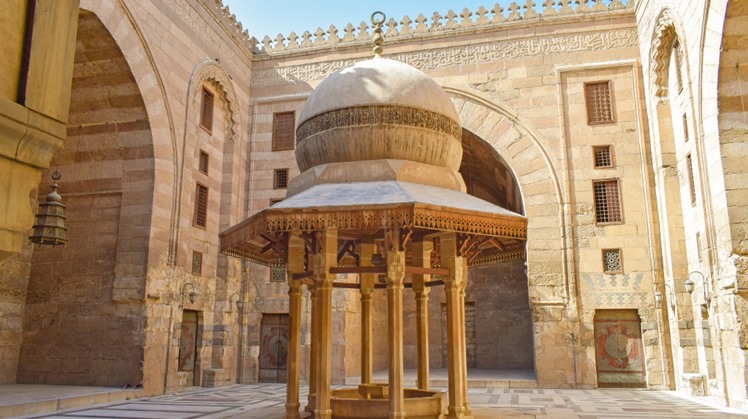The history of the Maritime Mamluk state (648-792 AH - 1250-1390 AD) goes back to its founder Sultan Najm al-Din Ayyub, who brought the Mamluks and built a fortress for them on the island of Rawda in 638 AH. And the family of Al-Mansur Qalawun.
Al-Zahir Baybars made several administrative amendments, including the revival of the Abbasid Caliphate and the transfer of its headquarters to Cairo in 658 AH, while the rule of Al-Nasir Muhammad bin Qalawun, who was close to half a century of rule, is considered the most prosperous era of the maritime Mamluks, according to the website of the Ministry of Tourism and Antiquities, and he succeeded in ruling Egypt. After Al-Nasir Muhammad, many rulers, most of whom were young, were controlled by the "Atabeg" army leaders, and this remained the case until Prince Barquq, the founder of the Circassian Mamluk state "Al-Burjia" appeared.
Al-Nasir Muhammad ibn Qalawun is the ninth sult of the Mamluk Bahri state. He was nicknamed Abu al-Ma’ali and Abu al-Fath. He lived during the reign of the Abbasid caliphs, al-Hakim bi-Amr Allah the First, Caliph Suleiman al-Mustakfi Billah and Caliph Ibrahim al-Wathiq Billah. He ruled on the throne of the Mamluk Sultanate three times in the periods from 693 AH / 1293 to 694 AH / 1294, and from 698 AH / 1299 to 708 AH / 1309 AD, and from 709 AH / 1309 AD", until his death in 741 AH / 1341 AD.
Muhammad bin Qalawun, one of the most prominent sultans of the Qalawun dynasty and the Mamluk state, fought wars against the Crusaders and Mongols, and reformist wars at home against corruption. During his rule, Egypt witnessed a civilized and urban renaissance that it did not witness during the reign of any other sultans of the Mamluk state.
 Wed, Jan. 19, 2022
Wed, Jan. 19, 2022